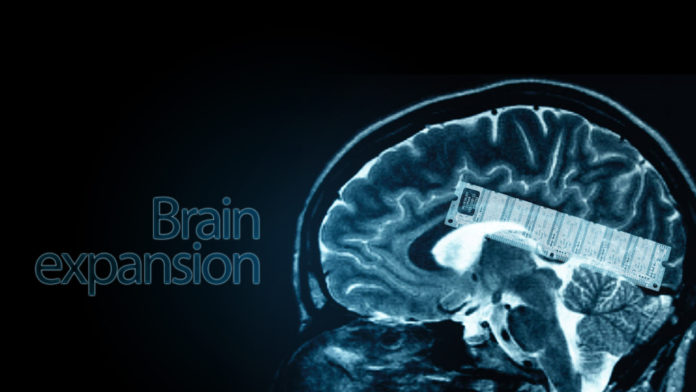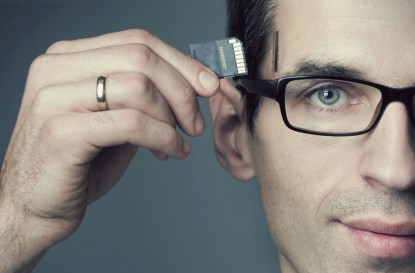
Every year hundreds upon millions of individual’s battle with the heavy burden of their “Internal” brain memory.
And with every day accidents that happen such as traumatic brain injury that we see a disturbingly high number in our military veterans as well as football players, stroke and Alzheimer’s that happens more so upon our elderly generation, as well as just normal brain aging that seems to have its toll on everyone.
No matter what, our struggle with memory loss does appear to be inescapable. And with the advancing and rapidly rising technology science, a maverick neuroscientist is working around the clock on a brand new electronic cure to aid in this weak and vulnerable field. 
This new technology break through is a revolutionary implant that has already proven to actually aid in memory encoding with test results from rats as well as monkeys. This device has started human testing specifically targeting those in which are touched with epilepsy. This exciting implant will blow the field of future memory prosthetics wide open.
Mr. Berger knew that from step one he will be facing a behemoth of this enormous issue world-wide. He stated that they are not looking to match everything the brain does while it processes memory, but develop at least a decent mimic.
Berger is all too often asked if he is able to model it and even put it into a device, and can you get that device to work in any brain? And it is of those questions in which leads people to consider Berger a crazy person and believe the task at hand is too hard.
However, Berger and his team had a solid ground from the start of their project.
The hippocampus, which is a region that is buried deep inside the folds and grooves of your brain, is a critical gatekeeper that automatically converts your memories from short-lived into long-term. Berger needed to understand how the hippocampus is able to perform this complicated feat, and so he spent the majority of his last 35 years learning about the hippocampus.
Berger learned that at the heart of the hippocampus, a memory is indeed a series of electrical pulses that can and will occur over time and these electrical pulses that are generated by a given number of neurons. This is an important knowledge curve as it suggests that the team can now reduce the problem to a mathematical equation and utilize the new knowledge and insert it into a computational framework.
Berger is not alone on this project either. In fact, teams of neuroscientists have also began to decipher the hippocampus information. And the key to recording and deciphering this information starts with CA3, which is basically that “Input” section, and ending at CA1, that is the “Output” section, nodes.
This same signal is impaired in those who suffer from memory disabilities and Berger with his team thought that if they could recreate the pulses by using silicon, then they may be able to restore, and possibly even boost, memory loss.
However, during the research, the brains memory code has proven to be extremely difficult for the team to crack.
Their problem lies within the non-linear aspect of the neural networks. This is the signals that are often noisy and are even constantly overlapping in time, which also leads to some of the inputs being suppressed and even accentuated. With a network of hundreds upon thousands of neurons, the smallest change could amplify tremendously which then can lead to vastly different outputs.
Berger claimed that it is a chaotic black box.
Berger, with the aid of his team, started their testing’s with simple tasks with rats. The team trained the animals to push on a lever, if the rats chose the right lever, they were rewarded with a treat. While the rats were learning the lever test, the team was recording the series of pulses from CA3 to CA1 inside the hippocampus. Carefully capturing the way, the signals were transformed during the session that has been laid down into long-term memory. Then configured a way to use the electrical “Essence” of the memory to program an external memory chip.
Once the Chip was developed and inserted into the rats, the team gave the rats a drug that would temporarily disrupt their ability to not only form, but access long-term memories. This in return would make the rat forget about their reward behind the correct lever. However, after implanting the rats with the chip into the hippocampus, the team pulsed CA1, which is the output region, with their own memory code.
As hoped, the results were jaw dropping. Powered by only an external memory module, the rats regained their ability to pick the correct lever every time.
Ecstatic about the outcome of the results, the team had set out to perform the same results from monkeys. By placing electrodes directly onto the monkey’s brains, the team had shown the monkey a compilation of semi-repeated images. They would capture the prefrontal cortex’s activity as the monkey recognized an image in which they have seen previously.
After learning how this operates, the team then used a hefty dose of cocaine that would inhibited that specific section of the brain and case disruption of the monkey’s recall.
Now, using electrodes that have been programmed with the “Memory Code”, the team of researchers guided the signal of the brain back on track. And just like hopped again, the test results of the animal’s performance improved significantly.
If that is not exciting enough, just last year Berger and his team started to perform their testing onto the next level…Human Testing. Due to the high risks that are affiliated with brain surgery, the team had recruited 12 patients with epilepsy as they already have electrodes implanted into their brain in order to aid in the tracking of their seizures.
The patients were asked to look through a series of images, once they were completed they were then asked to recall an image in which they had seen just 90 seconds ago. The memory code had proven to be effective only 80% of the time. And while that is not perfect, it is still a good start for the team.
“The goal is to improve the quality of life for somebody who has a severe memory deficit. If I can give them the ability to form new long-term memories for half the conditions that most people live in, I’ll be happy as hell, and so will most patients” – Berger
This Article (Brain Memory Boosting Implant!) is free and open source. You have permission to republish this article under a Creative Commons license with attribution to the author and AnonHQ.com.






I just fear what it can be abused for.
Because they will try to abuse it if they can.
The capitalists and governments = the 1%